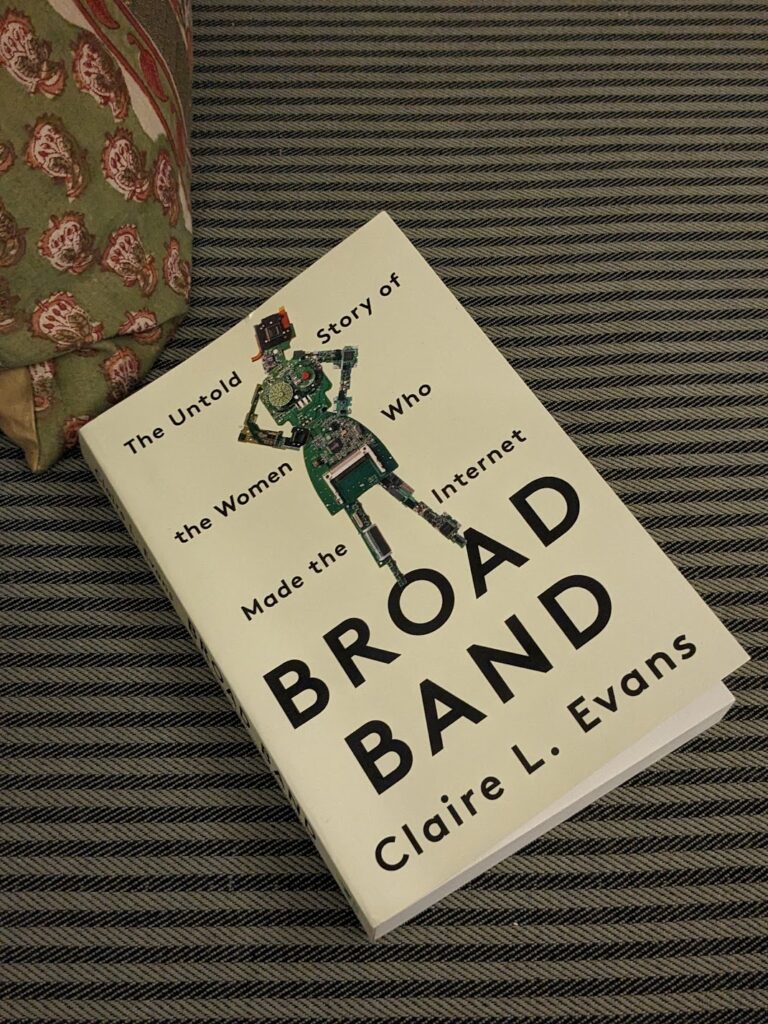Claire L. Evans
I had a sense of deja vu while reading this, and later realised that it was thanks to Maria Popova’s Figuring. The books are very different in terms of scope, but are connected by the women-oriented narrative, the idea of intellectual successors, and the presence of what one could call a ‘crossover character’ – Maria Mitchell.
When we think about the internet’s history, and its current pantheon, the names that pop up are all, or at least mostly, male. But Claire Evans points out that the origin stories are actually mostly female. Their contributions are practically invisible both in the public eye, and while we use the web.
Female mental labour was the original information technology, from the time of operational computing machines to programming and mainframes, protocols and even media empires in the early internet-era. Their empathy was reflected in everything they built, but unfortunately it was lost in the money and scale optimisation.
Before it became a thing, a ‘computer’ was a person who computed, collaboratively working on large-scale mathematical problems. By the mid-twentieth century, this was pretty much considered a woman’s job. We begin, predictably, with Ada King, Countess of Lovelace, and her contribution to Charles Babbage’s work, and then continue to Grace Hopper’s work around World War 2 on what was called the Mark 1 (and 2) computers, closer to Babbage’s mechanical engines than modern computers. Work that would play a part in the Manhattan project and the atom bomb, though Grace never knew it.
Another machine around the same time was the ENIAC, and the former human computers who did most of the wiring were called the ENIAC Six, all women. They wrote programs for the machine with trial and error, sometimes diagnosing it to the individual vacuum tubes that made up the machine. But their efforts were never celebrated or rewarded. Grace is remembered as the ‘grandmother of COBOL’ because she brought in the set of people required to build a common machine language.
By the 1960s, programming was seen as an alternative to answering phones, though women ‘programmers’ were paid far less than their male counterparts. This drove women away, and NATO called for an international conference to solve it. No women were invited. The significant change they made was semantic – programming became software engineering, and its journey towards masculinity began.
The rest of the book traces the pioneering work of many women who never received their due – Pam Hardt-English, Jake Feinler – who at one point (and it is hard to imagine) was air-traffic control, librarian and manager of the Internet (then, ARPANET), Radia Perlman, Stacy Horn, Wendy Hall and the early days of hypertext systems, Marisa Bowe, Jaime Levy and her electronic magazines and their original word.com (a Web magazine), Nancy Rhine, Ellen Pack, Marleen McDaniel (Women’s Wire, and then women.com), Brenda Laurel and many others.
Reading about the early world of communities was very nostalgic. I am old enough to have been on IRC chat, in an era when you could just be. I also realised that the 90s web culture (or culture in general if I go by Klosterman) of choosing between being a guerrilla or getting paid is something I deeply relate to (on the side of the former). In the early 2000s, when I first started frequenting the web (we ‘went’ online), what attracted me were the connections, and the ability to express.
Claire Evans’ description is accurate – ‘the internet exists at the confluence of code, culture, and infrastructure’. Women have played a significant part in each, and it is easy to imagine a much better web if they had got their due and continued the work they started. Maybe we would have communities which are antitheses of the toxicity we find online now.
1. the com in .com is short for commercial. .bus lost out 🙂
2. One of the most interesting artifacts of the dot-com bubble is a web site FuckedCompany.com… posted new industry ‘fucks,’ rating each by severity: layoffs, distressing press releases, and empty offices.

